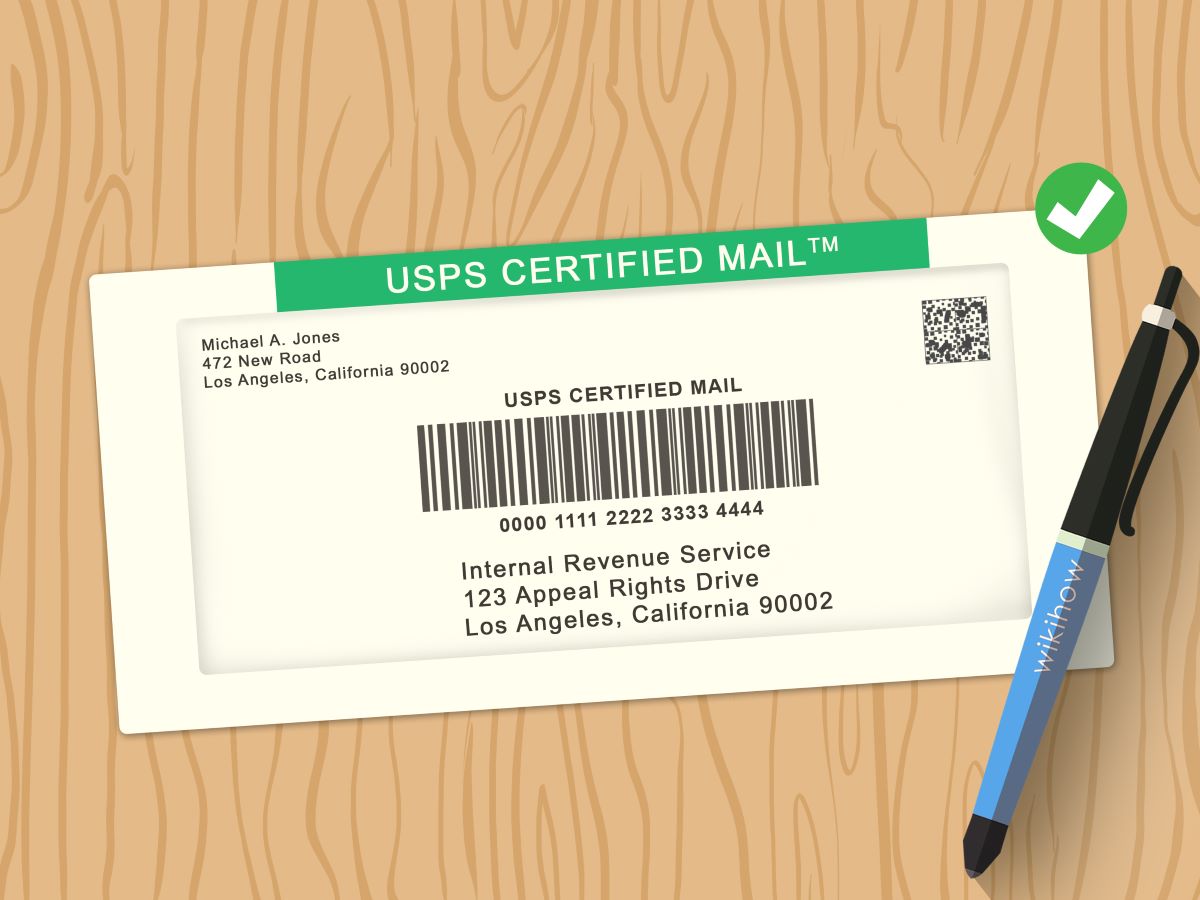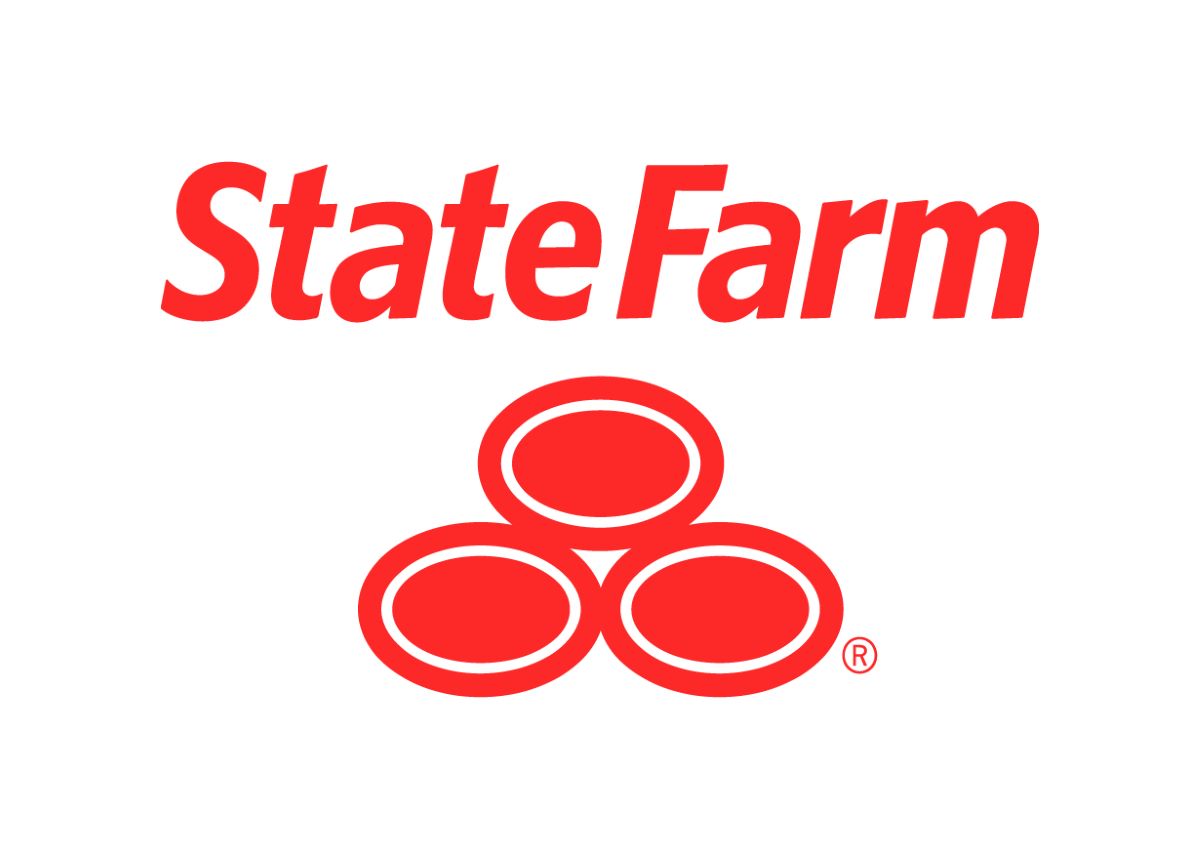

Finance
How To Write A Funding Request
Published: December 22, 2023
Learn how to write a compelling funding request for finance purposes. Step-by-step guide to secure the financial support you need.
(Many of the links in this article redirect to a specific reviewed product. Your purchase of these products through affiliate links helps to generate commission for LiveWell, at no extra cost. Learn more)
Table of Contents
- Introduction
- Step 1: Research and Identify Funding Opportunities
- Step 2: Determine Your Funding Needs
- Step 3: Prepare a Compelling Proposal
- Step 4: Outline the Project or Initiative
- Step 5: Clearly Define Goals and Objectives
- Step 6: Present Your Budget
- Step 7: Highlight the Potential Impact and Benefits
- Step 8: Provide Supporting Documentation
- Step 9: Review and Revise Your Request
- Conclusion
Introduction
In today’s competitive business landscape, securing funding is essential for the success and growth of any venture. Whether you are an aspiring entrepreneur, a small business owner, or a nonprofit organization, having the financial resources to support your goals is crucial. However, writing a compelling funding request can be a daunting task, especially if you’re not familiar with the process.
This article aims to provide a comprehensive guide on how to write an effective funding request. By following the steps outlined in this guide, you can increase your chances of securing the funding you need to bring your ideas to life.
Before diving into the specifics, it’s important to understand that a well-written funding request goes beyond simply asking for money. It should clearly demonstrate the value of your project or initiative, outline your goals and objectives, and showcase the potential impact and benefits. To achieve this, it’s essential to conduct thorough research, prepare a compelling proposal, and provide supporting documentation.
Throughout this article, we will explore each step in detail, providing practical tips and insights to help you craft a persuasive funding request. Whether you’re seeking funding for a new business venture, a product development initiative, or a community project, the strategies shared here will assist you in presenting your case in the most compelling manner possible.
So, let’s dive into the first step: researching and identifying funding opportunities.
Step 1: Research and Identify Funding Opportunities
Before you begin writing your funding request, it is crucial to research and identify potential funding opportunities that align with your project or initiative. The goal is to find organizations or individuals who have a vested interest in supporting causes similar to yours.
Start by conducting an extensive search online. Look for grants, scholarships, sponsorships, or investment opportunities that cater to your specific field or industry. You can use search engines, funding databases, and professional networks to gather information on potential funders.
Next, narrow down your list based on eligibility criteria. Ensure that the funding opportunity aligns with your project’s goals, objectives, and target audience. Pay close attention to any geographic restrictions, sector preferences, or funding priorities outlined by the funder.
Once you have shortlisted potential funding opportunities, take the time to thoroughly research each organization or individual. Understand their mission, values, and previous funding initiatives. This will give you valuable insights into their funding priorities and help you tailor your request accordingly.
In addition to online research, network with industry peers, attend conferences or workshops, and join relevant professional associations. Engaging with individuals who have experience in securing funding can provide valuable guidance and potential connections.
Remember, quality over quantity. It’s better to focus on a few funding opportunities that closely align with your project’s objectives rather than sending out generic requests to multiple funders. Tailoring your request to the specific interests and goals of the funder will significantly increase your chances of success.
Keep a detailed record of your research findings, including contact information, deadlines, and any specific requirements. This will help you stay organized throughout the funding request process.
Once you have completed your research and identified suitable funding opportunities, you’re ready to move on to the next step: determining your funding needs.
Step 2: Determine Your Funding Needs
After identifying potential funding opportunities, it’s important to determine your specific funding needs. This step involves assessing the financial requirements of your project or initiative to accurately request the amount of funding necessary to achieve your goals.
Start by creating a detailed budget that outlines all the costs associated with your project. Consider both one-time expenses, such as equipment purchases or facility renovations, and ongoing expenses, such as salaries or operational costs. Be as thorough as possible to ensure you don’t underestimate your funding needs.
In addition to direct project costs, remember to factor in any indirect costs as well. This may include overhead expenses, administrative costs, or marketing expenditures. It’s essential to have a clear understanding of all the financial aspects involved in your project to provide an accurate funding request.
When determining your funding needs, consider the timeframe of your project. Will you require funding for a specific duration or is it a one-time request? Understanding the duration of funding required will help both you and potential funders evaluate the feasibility and sustainability of your project.
Additionally, when assessing your funding needs, consider any potential revenue sources or in-kind contributions that can offset your financial requirements. This could include earning revenue through the sale of goods or services, securing partnerships with other organizations, or leveraging existing resources. By identifying potential revenue streams, you showcase your project’s financial viability and reduce the funding burden.
Remember, it’s important to strike a balance when determining your funding needs. Requesting an amount that is too high may discourage potential funders, while asking for an insufficient amount may hinder your project’s success. Take the time to carefully analyze your budget and consider the specific goals and objectives of your project.
Once you have determined your funding needs, you can move on to the next step: preparing a compelling proposal that effectively communicates the value and impact of your project.
Step 3: Prepare a Compelling Proposal
When it comes to securing funding, a well-crafted and persuasive proposal is key. This step focuses on preparing a compelling proposal that effectively communicates the value and potential impact of your project to potential funders.
Begin by clearly outlining the purpose and objectives of your project. Explain why your project is needed and how it addresses a specific problem or fulfills a particular need. Demonstrate the relevance and significance of your project to grab the attention of the reader.
Next, highlight the unique aspects and innovative elements of your project. Clearly articulate what sets your project apart from others and how it will result in positive outcomes or advancements in your field. Use this opportunity to showcase your expertise, experience, and passion for the project.
Support your proposal with evidence and data. Include relevant statistics, research findings, or case studies to strengthen your argument and validate the potential success of your project. Facts and figures lend credibility to your proposal and show that you have thoroughly researched your project’s feasibility.
It’s important to outline a clear and realistic timeline for your project. Break it down into specific milestones or phases and provide estimated completion dates. This demonstrates your project management skills and gives funders confidence in your ability to execute the project effectively.
Consider the language and tone of your proposal. Use persuasive and compelling language to engage readers and convey your passion and dedication to the project. Emphasize the potential positive impact and benefits of funding your project, both for your organization and the broader community or target audience.
Include visuals, if appropriate. Graphs, charts, or infographics can help convey complex information in a visually appealing and accessible way. Visuals can also enhance the overall presentation of your proposal and make it more memorable.
Lastly, proofread and edit your proposal to ensure clarity, coherence, and accuracy. Typos or grammatical errors can detract from the professionalism and credibility of your proposal. Take the time to review your work or have a trusted colleague provide feedback before finalizing your proposal.
By preparing a well-structured, persuasive proposal, you increase your chances of capturing the attention and interest of potential funders. Now, let’s move on to the next step: outlining the project or initiative in detail.
Step 4: Outline the Project or Initiative
Once you have prepared a compelling proposal, the next step is to outline the project or initiative in detail. This step focuses on providing a clear and comprehensive overview of your project, including its objectives, activities, and expected outcomes.
Start by describing the overall goal of your project. What are you aiming to achieve? Clearly articulate the purpose of your project and how it aligns with the funding opportunity and the priorities of potential funders.
Break down your project into specific activities or tasks. Provide a step-by-step outline of the key activities you will undertake to accomplish your goals. Make sure to include any milestones or checkpoints that will help track progress and ensure accountability.
When outlining your project, be specific and realistic. Avoid vague or broad statements, and instead, provide concrete details. Include information such as the duration of the project, the resources required, and any partnerships or collaborations that will be involved.
Consider the potential challenges or risks that may arise during the project and address them in your outline. Demonstrate that you have considered various scenarios and have strategies in place to mitigate potential obstacles. This shows funders that you have thought ahead, increasing their confidence in the success of your project.
Remember to tie your project back to the overall objectives and mission of your organization or cause. Explain how the project aligns with your organization’s values and long-term vision, emphasizing the broader impact it will have.
When outlining the project, be mindful of the language and tone you use. Keep it accessible and avoid jargon or technical terms that may confuse readers. Aim for a balance between providing sufficient detail and keeping it concise and easy to understand.
Visuals can be beneficial in this step as well. Consider including diagrams, flowcharts, or visual representations of the project timeline to enhance understanding and engagement.
Ultimately, the goal of outlining the project is to paint a clear picture of what you aim to accomplish. By providing a detailed and well-structured overview, you enhance the transparency and viability of your project in the eyes of potential funders.
Now that you have outlined your project, it’s time to move on to the next step: clearly defining your goals and objectives.
Step 5: Clearly Define Goals and Objectives
Clearly defining your goals and objectives is a crucial step in writing a funding request. This step focuses on articulating specific, measurable, achievable, relevant, and time-bound (SMART) goals and objectives for your project or initiative.
Start by determining the overarching goal of your project. This is the high-level outcome you aim to achieve. It should be concise, clear, and aligned with the overall purpose of your project. For example, a goal could be to reduce unemployment rates in a specific community or to increase access to education for underserved populations.
Next, break down your goal into smaller, measurable objectives. Objectives are more specific and tangible than goals. They should be realistic and achievable within the timeframe of your project. Each objective should directly contribute to the accomplishment of your overall goal.
When defining your objectives, make sure they are measurable. This means they should be quantifiable or have specific criteria for success. For example, an objective could be to train 100 individuals in job skills or to distribute 1,000 educational resource kits to students in need.
Ensure that your objectives are relevant to the overall goal of your project and align with the priorities of potential funders. Consider the needs of your target audience or community and tailor your objectives to address those needs directly.
Additionally, set a timeline for achieving your objectives. This adds a time-bound element to your goals and helps you stay focused and accountable. Determine milestones and target dates to track your progress and ensure timely completion of each objective.
When defining goals and objectives, it’s important to keep them realistic and attainable. Stretching beyond what is feasible may raise concerns among funders. Strike the right balance between ambitious aspirations and practicality.
Clearly state your goals and objectives in your funding request, providing a concise and compelling explanation for each one. Describe how achieving these goals and objectives will make a positive impact and contribute to the long-term success of your project.
By clearly defining your goals and objectives, you show funders that you have a clear roadmap and a strategic approach to achieve your intended outcomes. This increases the credibility and viability of your funding request.
Now that you have defined your goals and objectives, let’s move on to the next step: presenting your budget.
Step 6: Present Your Budget
Presenting a well-prepared and detailed budget is a crucial step in the funding request process. This step focuses on outlining the financial aspects of your project or initiative in a clear and organized manner.
Start by creating a comprehensive budget that accounts for all the costs associated with your project. Divide your budget into categories to provide transparency and facilitate understanding. Common budget categories include personnel, supplies and materials, equipment, marketing and outreach, overhead expenses, and contingency funds.
Include both one-time and ongoing expenses in your budget. One-time expenses may include initial investments or equipment purchases, while ongoing expenses encompass operational costs such as salaries, rent, utilities, and maintenance.
Estimate the costs for each category based on market research, quotes, or previous experience. Be as accurate and realistic as possible. Overestimating may raise questions about your financial management abilities, while underestimating may lead to insufficient funding.
When presenting your budget, include a brief narrative that explains the purpose of each category and the anticipated expenses. This narrative helps justify the funding amount you are requesting and provides context for funders to understand why each cost is necessary for the success of your project.
Additionally, include any revenue or income sources that will offset the project expenses. This could be through earned revenue, sponsorships, in-kind contributions, or partnerships. Demonstrating that you have explored multiple funding avenues and have a strategy to cover some of the costs showcases your financial sustainability and reduces the funding burden.
Consider using visual aids such as tables or charts to present your budget in a clear and easy-to-understand format. Visual representations can enhance comprehension and make your budget more visually appealing.
Be transparent about any potential risks or uncertainties that may impact your budget. Address how you have mitigated these risks or how you plan to handle them if they arise. This shows that you are mindful of potential financial challenges and have contingencies in place.
It’s essential to review and revise your budget multiple times to ensure accuracy and completeness. Have someone with financial expertise review your budget to provide valuable feedback and identify any potential areas for improvement.
Presenting a well-structured and realistic budget demonstrates your financial management skills and your ability to utilize funds responsibly. When funders see a detailed and thought-out budget, they are more likely to have trust and confidence in your funding request.
Now that you have presented your budget, let’s move on to the next step: highlighting the potential impact and benefits of your project.
Step 7: Highlight the Potential Impact and Benefits
Highlighting the potential impact and benefits of your project is a crucial step in writing a funding request. This step focuses on clearly and compellingly communicating how your project will make a difference and bring value to the target audience, community, or cause.
Start by identifying and understanding the specific stakeholders or beneficiaries of your project. Consider who will be directly or indirectly affected by your work and how their lives or circumstances will be improved. This could include individuals, organizations, or the broader community.
Clearly articulate the anticipated outcomes of your project. What positive changes do you expect to see as a result of your efforts? Will it lead to increased access to education, improved health outcomes, increased employment opportunities, or a stronger community? Clearly define and quantify these anticipated outcomes to demonstrate the tangible impact your project will make.
Support your claims with evidence and data. Utilize statistics, research findings, case studies, or testimonials to validate the potential impact of your project. Demonstrating that there is a need for your work and that it has the potential to address that need effectively increases the credibility of your funding request.
Consider the long-term benefits of your project. How will the impact extend beyond the duration of the project? Highlight any potential ripple effects or lasting changes that will continue to benefit the community or target audience in the future. This showcases the sustainability and long-term value of your project.
Make the connection between your project and the broader goals or priorities of potential funders. Emphasize how your work aligns with their philanthropic mission or strategic objectives. Showcasing this alignment increases the likelihood of receiving funding as it demonstrates a shared vision and common interests.
In addition to highlighting the impact and benefits, address any potential risks, challenges, or limitations associated with your project. Be transparent about any potential obstacles and explain how you plan to overcome them. This demonstrates your foresight and preparedness, as well as your commitment to mitigate any potential challenges.
Communicate the potential impact and benefits of your project in a succinct and compelling manner. Use persuasive language and storytelling techniques to captivate the reader’s attention and evoke an emotional response. Paint a vivid picture of the positive change that your project will bring.
By highlighting the potential impact and benefits of your project, you provide funders with a compelling reason to invest in your work. Showcasing how your project aligns with their interests and the positive outcomes it will generate increases the likelihood of securing funding.
Now that you have highlighted the impact and benefits of your project, let’s move on to the next step: providing supporting documentation.
Step 8: Provide Supporting Documentation
Providing supporting documentation is a critical step in the funding request process. This step focuses on including relevant and compelling documents to strengthen your case and provide credibility to your proposal.
Start by gathering any documentation that supports the claims and information mentioned in your funding request. This could include research studies, impact assessments, success stories, testimonials, or previous project evaluations. These documents serve as tangible evidence of the effectiveness and potential success of your project.
If applicable, include financial statements and reports from your organization or previous projects to demonstrate your financial management capabilities. Transparency and accountability are crucial when it comes to finance, and providing these documents showcases your commitment to responsible financial practices.
In addition to financial documents, include any relevant permits, licenses, or certifications that are required for your project. This demonstrates that you have complied with all necessary legal and regulatory requirements, increasing the credibility of your funding request.
A well-prepared and compelling executive summary is also an essential supporting document. This concise overview of your funding request should contain the most critical information, including the purpose of your project, the amount of funding requested, and the potential impact and benefits. An impactful executive summary can quickly grab the attention of potential funders and encourage them to continue reviewing your request.
If applicable, include letters of support from stakeholders, partners, or community members who endorse your project. These letters can provide validation and demonstrate the widespread support for your initiative.
Consider using visual aids such as infographics or images to enhance your supporting documentation. Visuals can make complex information more accessible and help illustrate the key points you are trying to convey.
Organize your supporting documents in a clear and logical manner, making it easy for funders to navigate through the information. Consider using tabs or a table of contents to provide an organized structure to your documentation.
Lastly, review all the supporting documentation to ensure that it is accurate, up to date, and relevant to your funding request. Remove any unnecessary or redundant documents, focusing on including only the most impactful and relevant ones.
By providing supporting documentation, you strengthen the credibility and validity of your funding request. These documents provide tangible evidence of the effectiveness, financial responsibility, and support for your project.
Now that you have provided supporting documentation, let’s move on to the next step: reviewing and revising your request.
Step 9: Review and Revise Your Request
Reviewing and revising your funding request is a crucial step to ensure that your proposal is concise, compelling, and error-free. This step focuses on thoroughly reviewing your request and making necessary revisions to enhance its overall quality.
Start by revisiting your funding request with fresh eyes. Take the time to read through your proposal from beginning to end, paying attention to the clarity and flow of the content. Look for any inconsistencies, gaps in information, or areas where further explanation may be required.
Check for grammar, spelling, and punctuation errors. A well-written document devoid of errors shows professionalism and attention to detail. Use online tools or enlist the help of a grammar-savvy colleague to ensure that your request is free of any typos or language mistakes.
Assess the overall structure and organization of your request. Ensure that the information is presented in a logical and coherent manner. Consider the readability and flow of the text, ensuring that each section transitions smoothly to the next.
Review the language and tone used throughout your request. Make sure it is engaging, persuasive, and tailored to the intended audience. Consider adding additional elements of storytelling or personal anecdotes to captivate the reader and make your proposal more compelling.
Verify that all the required components are included in your request. Ensure that you have addressed each step and provided all necessary supporting documentation. Double-check that all contact information, deadlines, and other details are accurate.
Solicit feedback from trusted individuals who can provide a fresh perspective on your funding request. Share your proposal with colleagues, mentors, or industry experts and ask for their input. Consider their feedback and revise your request accordingly.
During the revision process, be open to making substantial changes if necessary. Sometimes, significant improvements can be made by rethinking the structure, rearranging sections, or adding more compelling data or evidence to strengthen your case.
Once you have completed the revision process, set the request aside for a short period. Return to it with a final review to catch any last-minute errors or areas for improvement.
Remember, the review and revision process should be a continuous cycle. As you receive feedback or new information, be open to making further adjustments and updates to ensure your request is as refined as possible.
By thoroughly reviewing and revising your funding request, you increase the chances of capturing the attention and support of potential funders. A polished and well-crafted proposal demonstrates professionalism, attention to detail, and a dedication to success.
With your funding request now reviewed and revised, you are ready to submit it to potential funders and embark on your journey towards securing the financial support you need.
Conclusion
Writing a funding request may seem like a daunting task, but by following these steps, you can greatly improve your chances of securing the funding you need to bring your project or initiative to life.
Throughout this guide, we’ve explored the essential steps of researching and identifying funding opportunities, determining your funding needs, preparing a compelling proposal, outlining the project, defining goals and objectives, presenting a detailed budget, highlighting potential impact and benefits, providing supporting documentation, and reviewing and revising your request.
Each step plays a crucial role in crafting a persuasive funding request and demonstrating the value and potential impact of your project. From conducting thorough research to clearly defining your goals, and from presenting a comprehensive budget to highlighting the positive change your project will bring, every aspect contributes to the overall success of your funding request.
Remember to tailor your request to the specific interests and priorities of each potential funder. Take the time to carefully review and revise your proposal, ensuring that it is error-free, well-structured, and compelling. Use storytelling techniques, evidence-based data, and visual aids to engage the reader and make your case convincingly.
Furthermore, seek feedback from trusted individuals and professionals throughout the process. Their insights can provide valuable perspectives and help you refine your request further.
Lastly, approach the funding request process with resilience and patience. Not every request will be successful, but with each iteration, you improve your chances of securing the financial support you need to bring your project to fruition.
Now armed with a comprehensive understanding of how to write a compelling funding request, go forth and confidently pursue the funding that will enable you to make a positive impact on your organization, community, or cause.














